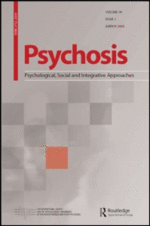Making Sense of Dissociation Raising Awareness & Promoting Healing
A rare opportunity to work with a trainer with both personal & professional experience, awareness and skills in understanding & working with dissociation.
Learning Outcomes:
• Greater awareness of the continuum of dissociative experiences.
• Enhanced confidence, responsiveness and awareness for supporting survivors of trauma, abuse and adversity.
• Awareness of effective short and long-term strategies for reducing distress and gaining control.
• Increased knowledge of working therapeutically with dissociative experiences and use of the DES-II.
• Greater understanding of the clinical relevance of dissociation.
• Acquired skills and knowledge to work collaboratively with survivors of trauma, adversity and abuse to help them reclaim ownership of their experiences and work towards recovery.
Suitable for anyone wishing to understand more about healing from trauma and working with dissociation, including mental health/social service professionals, psychotherapists and counsellors, voluntary sector workers, survivors and their friends, families and allies.
For further information and how to book a place, please visit:
https://www.eventbrite.co.uk/e/making-sense-of-dissociation-raising-awareness-promoting-healing-tickets-42463102282


